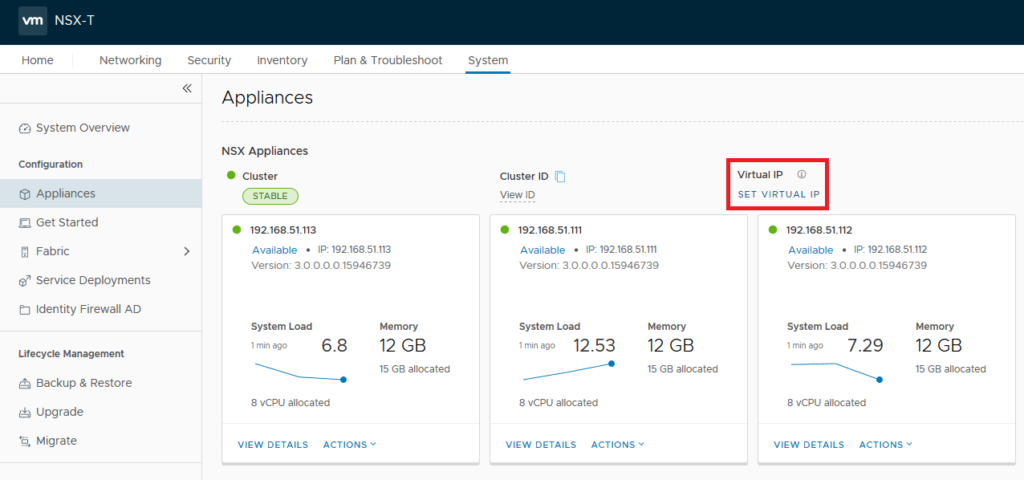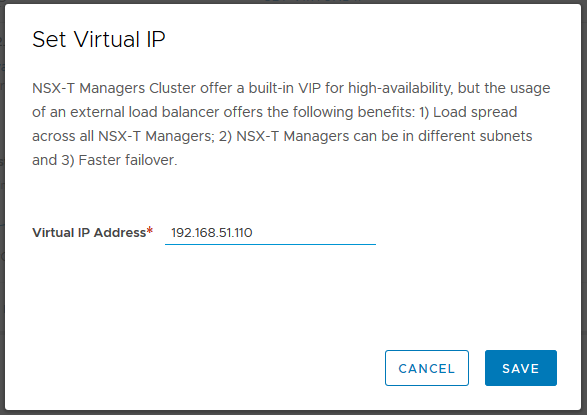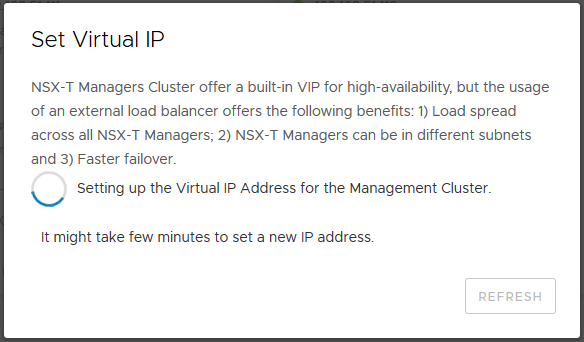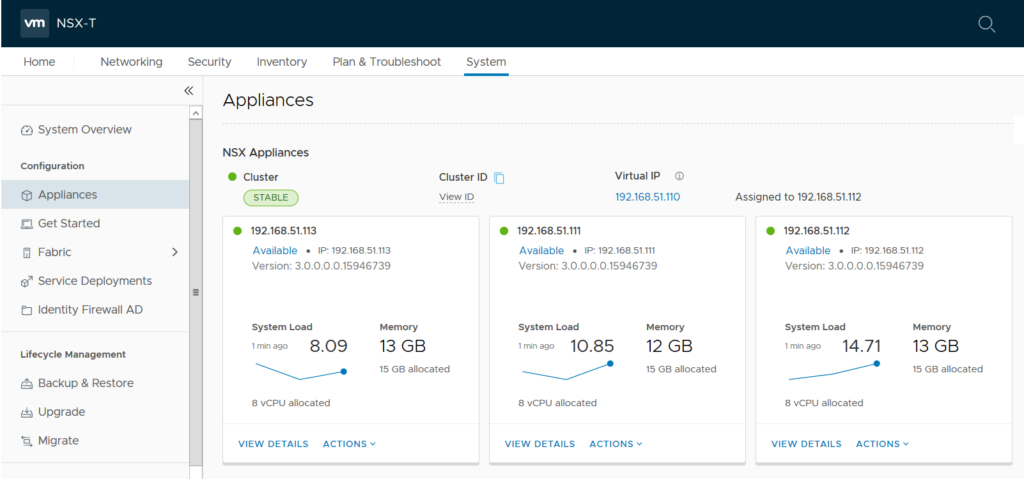Now that we have finalize deploying three managers in NSX-T management cluster we can go ahead and configure a Virtual IP(VIP) on it. We can use NSX-T internal mechanism to set an IP address on the cluster or setup an external load balancer in front of NSX-T managers. Configuring VIP which is recommended by VMware is more simple but using a LB would load balance traffic among NSX-T managers. This is a design question and should be chosen based on requirements and customer needs.

Please keep in mind that if you want to choose this approach, you need to have all NSX-T managers are on the same subnet. In this case, managers are attached to SDDC Management network. To configure Virtual IP, login to NSX-T Manager UI, choose System and on the left panel select Appliances then click on SET VIRTUAL IP option.

Here you can configure the IP address for VIP which should on the same subnet as NSX-T managers. I have designated an FQDN for the VIP and also created A and PTR record for it. Enter the IP address and click Save.

After saving the configuration, you need to wait for couple of minutes.

Now the VIP is configured, on the interface you can see which NSX-T manager is the current leader and assigned to this Virtual IP address.

From now on, you can reach NSX-T Management cluster through the VIP instead of managers’ actual IP address. In the next post we are going to configure one of the NSX-T 3.0 new features which is native Active Directory integration.
2 thoughts on “Configure Virtual IP for NSX-T Management Cluster”